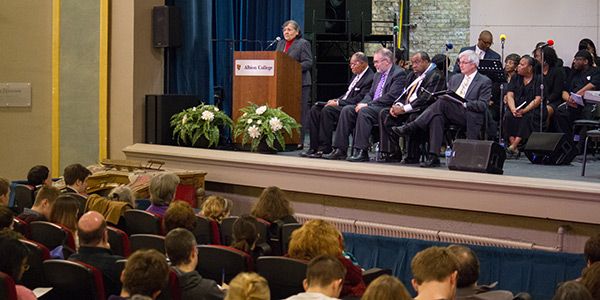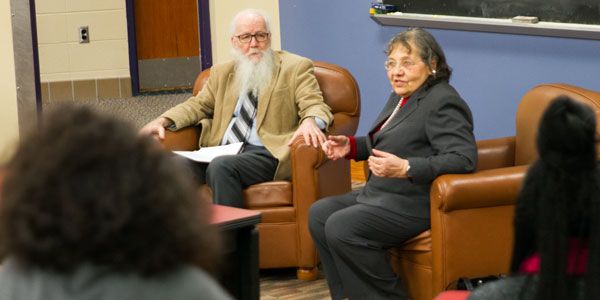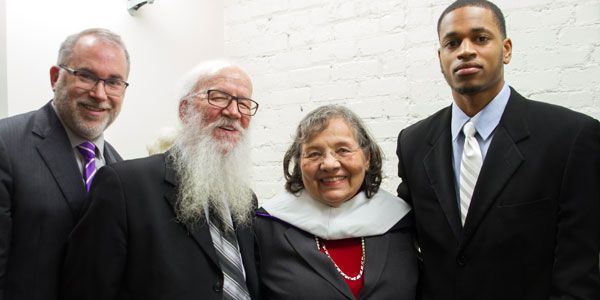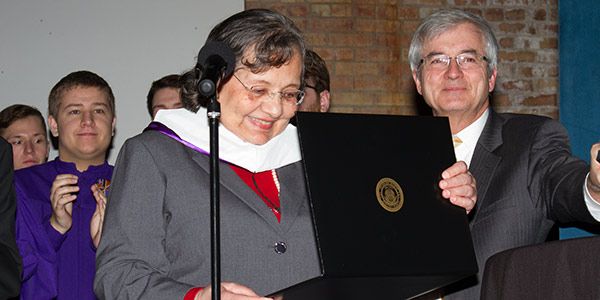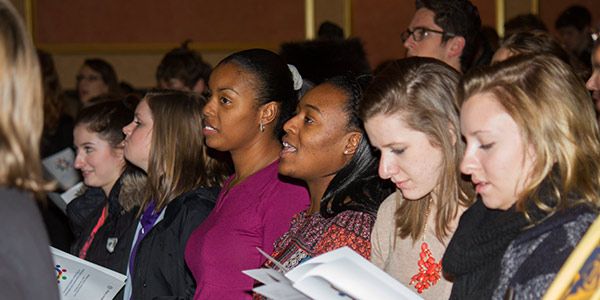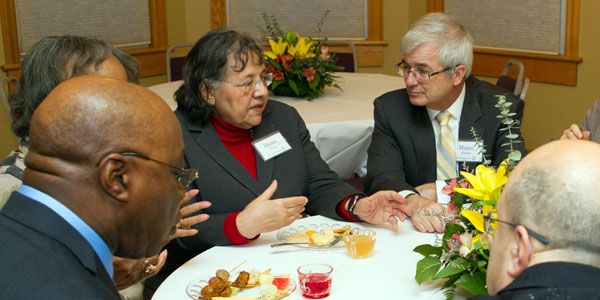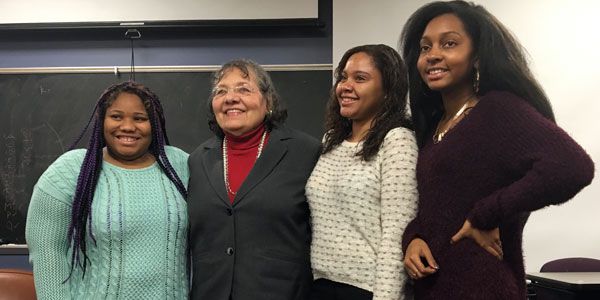Nash Champions Nonviolence at 2016 MLK Convocation
The Civil Rights Movement leader tells the Bohm Theatre audience: “People are not the enemy; you can love and respect the person at the same time as you attack the attitude”
February 4, 2016
By Jake Weber
With soft-spoken grace, sharp wit and a unique discernment of important events, Diane Nash enthralled a full Bohm Theatre audience in downtown Albion February 2 for the 2016 Reverend Dr. Martin Luther King, Jr. Convocation and Community Celebration.
Widely credited with having run many of the Civil Rights Movement’s most successful desegregation campaigns, Nash noted that she was asked to lead the Student Nonviolent Coordinating Committee (SNCC) in Nashville only after two men had disappointed the group. “We said we cannot afford to have officers who are not efficient, because someone could get killed or injured,” she said.
“I won’t be modest,” she added. “I was elected chairperson because they thought I was efficient.”
Inspired by an Earlier Leader
Rather than use her address to review her numerous personal achievements, however, Nash focused on describing how Gandhi’s nonviolence philosophy was instrumental in the Civil Rights Movement’s success.
In the face of bigotry and hatred, she noted that the SNCC held to Gandhi’s assertion that *people* are never the enemy. “Some of you are probably thinking that I can say that only because I do not know some of the people that you know,” she said with a smile.
“But it’s true. Unjust political and economic systems, racism, sexism, emotional and mental illness—those are enemies. If you realize that people are not the enemy, you can love and respect the person at the same time as you attack the attitude,” Nash said.
She cited the example of a Nashville manager whose restaurant was the target of the SNCC’s first desegregation campaign in the 1960s. Using nonviolence principles, the SNCC not only desegregated the restaurant, but did it in such a way that the manager’s fears for the restaurant’s failure did not come to pass.
The next year, Nash reported, that manager talked directly to the SNCC’s new restaurant targets, urging them to desegregate as well. “He was our opponent the first year, but turned into an ally the second year,” she said.
“Wouldn’t it have been a shame if we thought he was the enemy, when it was his racism that was the enemy?” she said. “One of the problems with using violence to bring about social change is that you often kill individuals and often leave the system—or the real problem—untouched.”
Nash startled the audience with her claim that “oppression requires the cooperation of the oppressed; it’s something the oppressed and the oppressor do together. If the oppressed withdraw their participation in the system, it will fall.”
The desegregation of buses in the South, she noted, is a classic example. “The day that blacks decided there would be no more segregated buses in Montgomery, there were no longer segregated buses in Montgomery. It took no action on the part of the whites,” she said. “We changed ourselves and presented a new set of options to Southern white racists. They had to kill us, or they had to eliminate segregation.”
The Many Steps Involved
Nash noted, however, that nonviolent campaigns aren’t quick, requiring a great deal of planning, organization and communication, both within the group and with targets of the campaign.
This approach, she noted, can sometimes help each side address concerns before they become problems. In talking with restaurant managers, Nash recalled, many were concerned that desegregation would drive away white customers. With this understanding, the SNCC recruited a cadre of white women who maintained a constant presence at the lunch counters during the first weeks of desegregation. “The plan worked beautifully except that the ladies complained bitterly about all the weight they gained,” Nash said.
One of the biggest lessons she learned, however, came about almost by accident. Nash recalled a project to organize a Mississippi town by going door to door. Almost every person she spoke to told her, “‘You will not have success here; these Negroes will not stick together.'” However, when the time came for the meeting, “All of the seats were filled; all of the standing room was filled. We had to open the windows for people who were outside,” Nash said.
“People had incorrect conclusions about their neighbors,” but more importantly, “nobody had actually tried to organize in that town,” Nash pointed out. “For anything to work, you have to do it. People see things that need to be changed, they think about what needs to be done, read about what needs to be done, talk to their friends about what should be done, but never get around to doing anything.
“There were times when we knew someone could be killed or injured, and someone would be overcome with fear. A number of times, I would see someone freaking out and someone else would remind them we were doing something important for generations ahead of us,” she said.
“Even though you were not yet born, we loved you. We worked hard to bring about the best society we could for you to be born into,” she concluded. “Future generations will look to you to do the same.”
